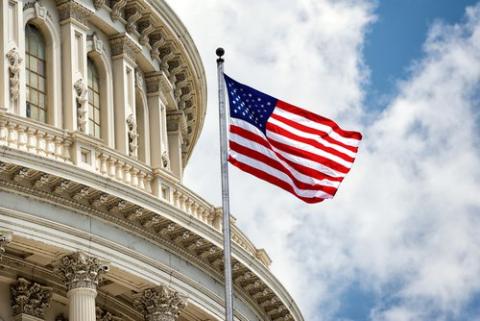After a mere 15 tries, Kevin McCarthy finally holds the gavel as Speaker of the House. Drowned out in stories of successive floor votes and physical altercations between middle aged men were a few voices who proposed the idea of moderates from both parties coming together to elect a Speaker that represented the center, as opposed to the party’s extreme flank.
Loudest of those quiet voices was Mary Peltola, the Democratic representative for Alaska’s at-large congressional district. Peltola first took office in a special election and went on to secure reelection against Trump-backed Sarah Palin in November.
In an interview with Alaska Public Media, Peltola said she was open to forming a coalition majority with Republicans, a practice common in Alaska that would give Democrats more power to shape the legislative agenda. Similar sentiments were expressed by Democrat Marcy Kaptur of Ohio and Republican Don Bacon of Nebraska.
Peltola is in a unique position in Congress, as Alaska uses a system of voting known as final four voting, where candidates of all parties run in an open primary, the top four vote getters appear on the ballot in the general election, and the winner is determined by ranked choice voting. Where most members of Congress run the risk of a primary challenge from within their own party for crossing the aisle, Peltola faces no threat from her party’s left flank.
In short, she’s free to vote for what the true majority of Alaskans want. In this case, it’s a governing coalition that actually governs.
What Happened Instead…
Concessions made by McCarthy during negotiations appear to have achieved exactly the opposite, and given outsized sway to the party’s Freedom Caucus - a more partisan group who generally seek to disrupt the legislative process as opposed to enable it. Most noteworthy, McCarthy returned the threshold for a “motion to vacate” to one vote, meaning one member of Congress could call for a floor vote to remove him as Speaker.
This has raised concerns about making an unproductive Congress even less productive, and introducing a destabilizing element in negotiations over raising the debt ceiling this summer.
The second is particularly concerning. While Americans should be worried about the size of the national debt, the fallout of political brinksmanship spooking debt markets would be even worse.
The only time the credit rating of the United States has been downgraded was in August of 2011, after Congress had been unable to reach an agreement on raising the debt ceiling. Rating’s agency S&P cited, “America’s policymaking and governance [are] becoming less stable, less effective, and less predictable.”
At the time, interest rates were at historic lows and 2011’s version of hyper-partisanship seems rather quaint when compared with today. With interest rates rising and some members of Congress widening the circle of legitimate political discourse to include pepper spraying Capitol Police, it’s safe to say S&P’s prognosis wouldn’t be any better today.
Another disruption in the debate over the debt ceiling could result in higher borrowing costs for the US government, meaning less money for programs such as defense and education. Research by the Committee for a Responsible Federal Budget shows current interest payments on the national debt totaled approximately $400 billion this fiscal year.
The same research shows this amount is projected to rise to $1.2 trillion by 2032, making it larger than spending on Medicaid ($789 billion) and defense ($998 billion). These projections don’t account for any spike in interest rates that might be caused by another downgrade in the country’s credit rating.
McCarthy and Pelosi’s common enemy
Despite their differences, McCarthy and Pelosi share a similar problem - the more extreme flanks within their own party. Pelosi understood this when she increased the threshold for a motion to vacate to a majority of members from either party. This gave her protection from her left flank and, as a result, allowed her to pass some critical legislation.
In returning to the prior threshold, McCarthy has given outsized leverage to the more extreme elements within Congress. With an economy appearing to enter recession, a war in Ukraine, and rising tensions with China, the need for a legislature that actually legislates are far higher than they were when Pelosi took power in 2019.
House rules can only do so much to shape how Congress operates. The mechanisms that land people in Congress can do far more.
Just as Pelosi and McCarthy are threatened from the more partisan wings of their own party, so is every other member of Congress. As many as 94% of House members sit in “safe seats”, meaning their party is more or less assured to win the general election.
This effectively means party primaries, elections that typically attract a smaller number of more partisan voters, determine who will take office. As a result, members of Congress have to focus on the more hardline members of their own party than the political center of the voters they serve.
This has contributed to the current era where politics is performance art, and compromising in order to serve the best interests of the country amounts to political suicide.
Both Mary Peltola and her Senate counterpart, Republican Lisa Murkowski, have shown how eliminating the threat of partisan primaries via final four voting can reward candidates more likely to seek consensus and compromise in the interests of solving problems. The remaining members of Congress and the system that put them in office have shown us exactly the opposite.
